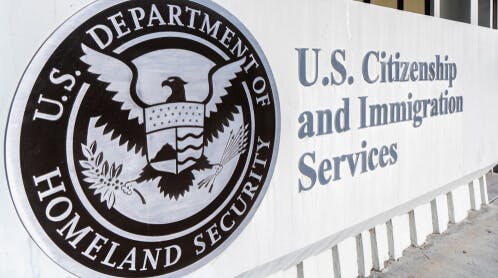The American Immigration Lawyers Association and IIUSA, the EB-5 national not-for-profit association, have issued a 30-page formal response to the recently published U.S. Citizenship and Immigration Services policy “clarification.” AILA and IIUSA staunchly oppose the policy and say it constitutes new and substantive requirements, and that retroactive application is unfair and damaging to the program.Previous USCIS policy guidance on redeploymentRedeployment of investor capital was an unforeseen situation when the regional center EB-5 program was first created in 1992. However, by 2015, for many Chinese investors, the concept of reinvesting their capital became a reality.Formal guidance wasn’t available, however, until 2017 when USCIS dictated that an investor’s capital must be “at risk” for the whole of their conditional permanent residency period. Thus, for EB-5 investors in backlogged countries, if their New Commercial Enterprise (NCE) receives investor capital back from the Job Creating Enterprise (JCE) before the completion of the investors’ sustainment period, the capital must be reinvested, or redeployed.While the industry has been operating on limited guidance from USCIS since 2015, questions have remained. And now with the immigration agency having just published an update of their Policy Manual regarding redeployment, that supposed “clarification” has drawn a lengthy — and critical — response from the American Immigration Lawyers Association (AILA) and Invest In the USA (IIUSA), the EB-5 industry’s not-for-profit trade association.This response from the two organizations, following USCIS’s invitation for the public to comment on the new policy, comprises a 30-page document that analyzes the new policy and offers concrete direction on how it must be changed.The fundamental focus of the AILA/IIUSA response is predicated on the fact that nothing in the previous USCIS guidance on redeployment spoke to geographic requirements.2017 ‘at risk’ guidance after job creationThe June 2017 USCIS policy update (the most recent one prior to this July 24, 2020 update) spoke to the issue of the “at risk” requirement after job creation had been fulfilled — a situation that would apply to redeployment. That 2017 policy stated that after job creation, capital can be at risk if reinvestment was…Consistent with the scope of the NCE’s businessAt risk for the purpose of creating a returnOpen to a risk of loss and opportunity for gainIn the course of business activityOf note, there was no reference in the 2015 Draft Memorandum, or the June 2017 Policy Manual update, that said after the job creation requirement is satisfied redeployment must happen inside the geographic boundaries of the regional center.Recent USCIS statements have not addressed geography requirements of redeploymentFurther, multiple times after official publications, such as during stakeholder meetings, USCIS admitted that they had not considered the issue of geographic requirements for redeployment. October 5, 2018, former agency director Francis Cissna stated, “We’re all bedeviled by this…. Congress needs to fix the laws that underlie the program.”On a stakeholder call a month later in November of 2018, Investor Program (IPO) director Sarah Kendall responded to a question about whether redeployment had to be within the scope a regional center. She declared that after job creation, “the following requirements continue to apply: (1) the immigrant investor must have placed the required amount of capital at risk for the purpose of generating a return on that capital, (2) both a risk of loss and chance for gain must be present for the investment; and (3) business activity must actually be undertaken.”‘At risk’ requirements are almost ‘identical’ before and after job creationAgain, there was no mention of geographic parameters being a requirement for redeployment. Kendall reiterated in an AILA
Category
Politics & PolicyDate
Sep 2nd, 2020
Comments
To leave comments you must Register first
Related Articles

Webinar
Watch
Compliance with the EB-5 Reform and Integrity Act of 2022: Requirements and Considerations

Politics & Policy
Read
Checklist of contents of regional center compliance policies and procedures manual under EB-5 Reform and Integrity Act

Politics & Policy
Read
8 Regional Centers and 22 NCEs sue government over 2020 redeployment policy guidance

General
Read
EB-5 expert discusses how fund managers can avoid investor challenges from redeployment decisions


